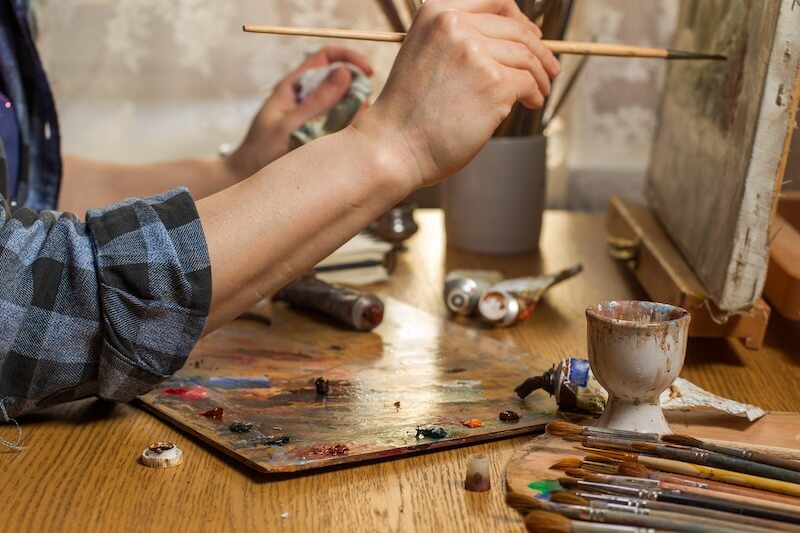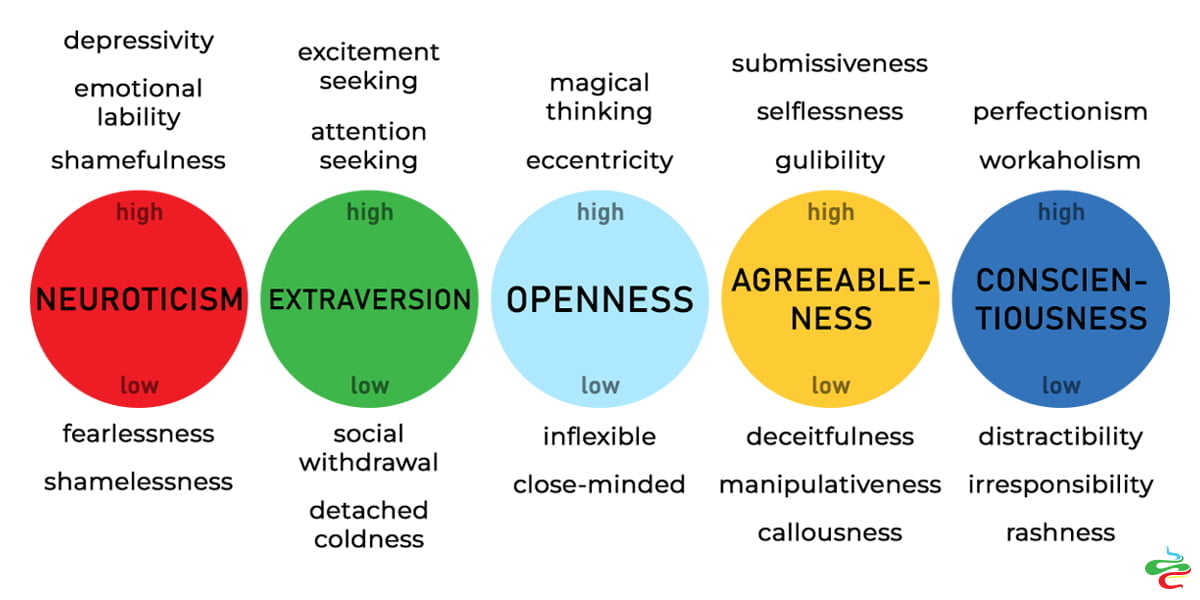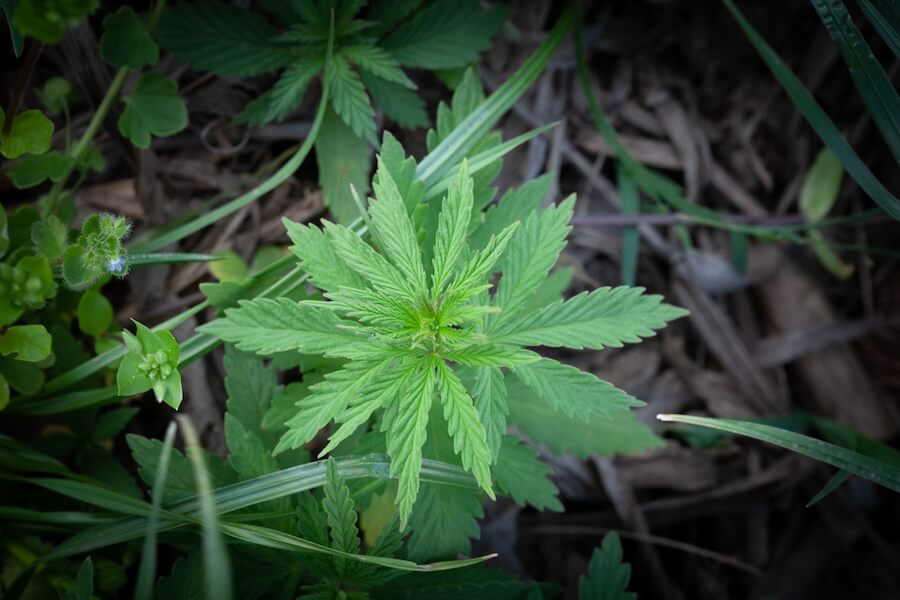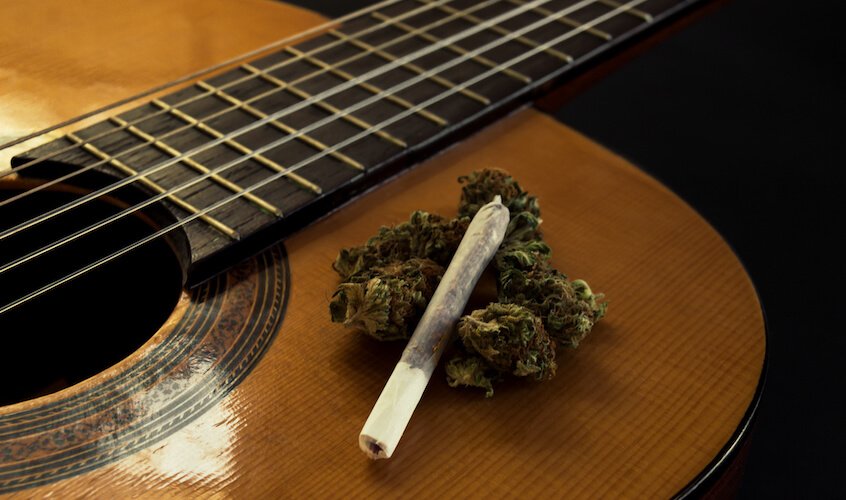Throughout history, countless artists, innovators, writers, and musicians have sought various means to unlock their creative potential. Among them, the use of substances, cannabis in particular, has played a constant role in the search for inspiration.
“The best way I could describe the effect of marijuana and hashish is that it would make me relaxed and creative.”
Steve Jobs
In the realm of artistic expression, many claim that marijuana made them more creative and gave them a boost to achieve their goals. But is that really the case?
Considering that we write this while being high, we could say: yes. However, it’s more complicated than that.
In our quest to find answers while navigating through science, artistry, and personal anecdotes, we discovered that the process has more to do with our personalities and how we engage with cannabis and its various aspects.
The article discusses our findings in three parts:
We discuss what creativity is and how marijuana relates to it, divergent and convergent thinking, and the altered state of mind.
We talk about inspiration, ideas and the role of cannabis’s aspects like potency and strains on creativity.
We’ll see how marijuana affects our cognition, motivation, focus, concentration, and memory.
In the end, as usual, we’ll offer a Summary of what we figured out.
So…
What does science say about marijuana and creativity?
When pondering if marijuana makes us more creative, we realise that there’s an implicit assumption in the question – that we’re all inherently creative.
This further makes us think: what does it mean to be creative? And when does marijuana come into the picture?
What is creativity?
We don’t want to fall into this rabbit hole, but some formulation would be helpful.
It’s easy to say: Well, creative people are artists, scientists, innovators. But aren’t bricklayers who invent a new way of laying bricks creative too? What is creativity anyway? This might be the weed talking, so let’s see what smarter-than-us people have figured out.

For this article, we’ll use Encyclopedia Britannica’s definition of creativity: The ability to make or otherwise bring into existence something new, whether a unique solution to a problem, a new method or device, or a new artistic object or form.
In other words – create something from nothing.
Creativity is a precious commodity. It’s also a process that can roughly be divided into five stages, defined in 1926 by Graham Wallas, a social psychologist and co-founder of the London School of Economics:
- Preparation – when we read, research, brainstorm or contemplate in a general direction
- Incubation – when we step back and let the idea marinate in the back of our minds
- Illumination – the aha moment when the light bulb goes on above our heads, and the answer to our creative quest appears
- Evaluation – when we consider the validity of our idea
- Verification – the time for hard work. This is the stage when we turn our idea into reality
It’s important to know that the creative process is individual, and these stages don’t necessarily come one after the other.
For instance, for us, the aha moment usually comes first. We might be watching something or listening to music, and suddenly we get an idea for a story. Then we start writing down whatever comes to our mind. This means we also enter the preparation stage, where we brainstorm while writing.
The science of cannabis and creativity
The link between cannabis and creativity hasn’t been extensively studied. This might be because scientists need to agree on what exactly creativity is and how it can be objectively measured. Because of this, studies also came up with conflicting results.
There are many claiming that cannabis enhances creativity. Generally, scientists look at its relationship with dopamine – the primary neurotransmitter regulating pleasure, motivation, and learning.
Marijuana increases dopamine levels, specifically in the areas of the brain responsible for thinking and planning. Elevated dopamine increases divergent and convergent thinking, associated with creativity (more on that later).
At the same time, however, just as many studies show the opposite – that weed doesn’t increase creativity. While they don’t dispute the increase in dopamine, for them, the ideas generated are not novel or simply not “creative enough.”
So, which one is it?
Our personality
The answer might lie in who we are as individuals. This relates to the so-called Big Five personalities traits defined in psychology:
- Conscientiousness – impulsive and disorganised vs disciplined and careful
- Agreeableness – suspicious and uncooperative vs trusting and helpful
- Neuroticism – calm and confident vs anxious and pessimistic
- Openness to Experience – prefers routine and practical vs imaginative and spontaneous
- Extraversion – reserved and thoughtful vs sociable and fun-loving
The Big Five remain relatively stable through most of our lives. Our genes and our environment influence them. They also predict certain important life outcomes like education and health.

It turns out that cannabis users, even when not high, are far more open to novel ideas. We have a more explorative and low anxiety mode of thinking when encountering new things. Simply put, on average, we are more adventurous. This falls under the extraversion and openness to experience traits. It’s the classic extroverts vs introverts split.
We’ll cite one particular study from 2017 done by Washington State University that sums this up nicely:
“While mainstream media has propagated that cannabis expands the mind and enhances creativity, our results show that the link between cannabis and creativity is largely a spurious correlation. This is driven by personality differences related to cannabis use (…). While cannabis users appear to demonstrate enhanced creativity, these effects are an artefact of their heightened openness to experience.“
So, it’s a chicken-and-egg situation. People more open to experience are more likely to engage with cannabis. And people who use cannabis are more open to new ideas. This combination of features makes us more creative.
In short, marijuana affects creativity through personality changes that tap into the creative process rather than directly messing with the brain’s chemistry to “turn on” creativity.
Since we mentioned divergent and convergent thinking, let’s see now what this is and how it relates to creativity.
Divergent and convergent thinking
All humans are advanced problem-solving machines. Our brain analyses novel experiences and incorporates them into its system.
These two modes of thinking are really the two sides of the same coin, as they relate to how we solve problems.
Divergent thinking is the generation of a variety of ideas and alternative solutions. We can call it brainstorming.
Convergent thinking encourages us to combine seemingly distant pieces of information to solve a particular problem. Otherwise called deduction. It’s how Sherlock Holmes solves crimes.
Divergent thinking calls for an associative, parallel, and flexible type of processing, whereas convergent thinking calls for analytical, serial, and persistent processing to converge on a single answer.
Although scientists make a distinction between them and relate creativity specifically to divergent thinking, for us, they both play a role.
When under the influence of marijuana, the dopamine release makes you calmer and more euphoric. Your inner ifs and buts subside, and your mind wanders. No doubt you’ve noticed this. An image pops up in your head, a sound or something that someone said, and suddenly, your brain takes you on a crazy journey through all kinds of unrelated thoughts. Soon after, you’ve already forgotten what you were talking about. This is divergent thinking going in hyper mode.
The same goes for convergent thinking. Here the journey takes you inwards instead of outwards and makes you obsess over a singular concept.
An altered state of mind
When high, you enter an altered state of mind where strange ideas flow freely, not bound by “ordinary thinking.” This state can help you perceive situations or objects in your life differently or look at them from a new angle. Stand-up comedians are particularly good at this. They observe a mundane situation and then spin it around to make it funny.

Or, as boxing legend turned cannabis entrepreneur Mike Tyson says:
“Using cannabis only raises me to my highest potential. When I do cannabis, I don’t do it to relax. I do it to think. That’s what the word “high” means. Your highest capability of thinking. The constant working of the mind.”
At the same time, using cannabis is capable of blurring the boundaries between our senses, increasing the capacity for wonder and awe. It can give us back something we all had as children – the ability to marvel at things. To be able to experience events profoundly and internally.
In another aspect, marijuana can also enhance creativity indirectly. It’s well documented that cannabis has therapeutic benefits like alleviating anxiety and depression, reducing chronic pain and increasing appetite. This can help you shed the mental and physical burden associated with these conditions, which would improve your general well-being. As a result, you can become more creative simply by enjoying your life more.
“Smoking just helps to free my mind, slow my thoughts down, and think about everything not only in a more poetic way but in a more creative way in general.”
Wiz Khalifa
Interestingly enough, the opposite can also be true. Cannabis can rattle our psyche and force us to contemplate a difficult issue. Maybe something bothers us unconsciously, which we’re unable to touch while going through our day-to-day lives. The problem might manifest itself while we’re high, giving us a creative boost to resolve it.
This is something we, personally, can attest to. Sometimes we get paranoid about situations we went through, mainly when smoking a potent indica. After the initial panic, we can reflect on why it makes us paranoid, how we can deal with it, and what we can do about it in this instance.
Marijuana allows you to dive deeper into past events, connect them to distant memories, and integrate them into a new experience. It also helps you realise that life is full of scary things, which you can overcome to become stronger and learn more about yourself. In other words, we’re capable of fighting dragons to find hidden treasures.
Joe Rogan, a famous comedian and the host of the most-watched podcast in the world, has a funny take on this:
“Everyone is afraid of that. But I think it’s a good idea to be paranoid now and again. Cuz I think that people are entirely too cocky for the situation that we are confronted with. We’re on a giant f*cking ball that is spinning in space, and nobody talks about it. (…) And if that doesn’t freak you out, you need to eat a pot cookie and get on an airplane. That’s a religious experience.”
We’ve noticed that marijuana improves our creative process simply by allowing us to reflect on our writing from a distance. We reevaluate our ideas and find a new approach or research topic.
Creativity and marijuana
Inspiration and ideas
This is another interesting phenomenon – how do we get inspired? Are there any triggers?
We usually associate inspiration with the excitement of the mind to such a degree that it makes us act. There isn’t one thing that can inspire you, and the process is highly personal. It can be reading a book, watching a movie or being motivated by the achievements of others. It can be witnessing something beautiful, like peaceful natural scenery. It can also be quite the opposite – getting inspired by the failures of others so you can avoid them.
Cannabis can be a great tool for this, as we mentioned earlier. Pulling you out of the ordinary creates space for new sensations that can lead to new ideas.
A very reliable combo for us is ganja and music. Just smoke a joint, put on a nice track and let the sounds take us away. Music creates feelings that write stories. And cannabis helps us connect with them. Just ask the hundreds of music artists like Snoop Dogg, Cypress Hill and Willie Nelson, who made a career from smoking marijuana and writing songs about it.
Not to mention the Rastafarian belief system in which reggae music and cannabis are indivisible. They’re also a spiritual and sociopolitical expression.
Marijuana also helped comedian, Bill Maher, figure out the format of his podcast. In an interview, he said:
“It looks like a club; it doesn’t look like a podcast studio. There’s no mic in your face, and we’re getting high. I feel like that combination has allowed people to open up and be real in a way I don’t see anywhere else. I don’t know if I could quite pull that off if I weren’t high.”
Individual variations – potency, strains, personal disposition
Dosage, strain, tolerance, and personal disposition all play a role in determining how cannabis influences creativity. You might have heard the term set and setting – the role our mental state and current environment play when using marijuana.
Cannabis strains
Every cannabis enthusiast knows that the plant comes in three main species: Sativa, Indica and Ruderalis. Modern breeding techniques have introduced a fourth species: the hybrid.

Sativa plants prefer warmer climates and take longer to grow. Generally, they have an energising effect and make you more social. It’s believed to be more creatively stimulating. It also provides a lighter high.
Indicas are adapted to growing in harsher climates and take way less time to develop their buds. They’re believed to be relaxing and mellow and produce the so-called couch-locked experience. They are more introspective. People usually prefer this type of strain because it gives you the stoned effect, both physical and mental. From personal experience, watching cartoons goes very well with this.
The differences in sensation are believed to come from the plant’s THC: CBD ratio. THC and CBD are the two main active compounds in cannabis, also called cannabinoids. THC is the only compound that gives you the high, whereas CBD has a physical and anti-inflammatory effect.
If you want to know more about these compounds and their effects on your body, check out our detailed article about cannabinoids.
Ruderalis is a wild species of cannabis, adapted to growing in the harshest environments. The main difference from its siblings is its auto-flowering ability. The plant doesn’t depend on sunlight to develop its buds. Instead, it starts flowering automatically after it reaches maturity.
The differences between Sativa and Indica are mostly anecdotal. Meaning that they aren’t scientifically based but reported by people who use cannabis. And with the emergence of the hybrid strains, they become less distinguishable.
Nevertheless, our experience suggests that cannabis sativa is more stimulating to creativity. Indicas make us more sluggish and affect our focus and motivation.
Cannabis potency and dosage
Potency and dosage are other contributing factors. Today’s strains are very potent, with THC content reaching 30%. This is a lot. In ancient times a typical cannabis flower would have 10-12%.
Highly-potent cannabis actually impairs divergent thinking.
Like any other mind-altering substance, be it alcohol or coffee, the dosage is critical. When it comes to cannabis, there’s a fine line between getting buzzed and being stoned out of your mind. Because of this, moderation is paramount. Especially when using edibles.
Two puffs are usually enough for us to get to this elusive state where we’ve shed our inhibitions, allowing the creative juices to flow through our bodies so we can start writing. Three puffs, though, and we’re in Gonesville, reaching for the remote, sinking into the couch.
Potential drawbacks
Like any other intoxicating substance, prolonged marijuana use can lead to dependence, detrimental to your creative output. Instead of being used as a tool to reach your full creative potential, it can morph into a coping mechanism or a substitute without which you don’t feel “like yourself.”
Many people share that, after a while, smoking cannabis may become a routine where they no longer enjoy its benefits. Instead, it makes them lose motivation and start procrastinating on their tasks. At the same time, fun activities like going to a concert or enjoying a nice meal at a restaurant might not feel as pleasurable when not high.
We’re all familiar with the term stoner, which is often connected to slacker.

Studies show this might be due to reduced dopamine synthesis and release in severely cannabis-dependent individuals.
Eventually, with heavy use, the brain might start relying on cannabis for its dopamine production. This can have various adverse effects, like reduced focus and concentration. Your thoughts might become scattered and inconsistent, making it more difficult to articulate your ideas.
Depending on the strain and dosage, marijuana can even affect coordination and motor skills. This can be particularly challenging for performers who rely on physical ability, like musicians and painters.
That’s why it’s important to take breaks and use marijuana in moderation.
Summary
Marijuana can be a great tool for creative individuals. By increasing dopamine release in our bodies, cannabis relaxes and opens us to new ideas, stimulating creativity. This, however, has more to do with our personalities than simply making us more creative.
The main benefit is the ability to enter an altered state of mind that expands the boundaries of our consciousness. It allows us to engage with the world from a new perspective, gain insights, or make connections that otherwise may remain hidden.
Cannabis use, however, has its drawbacks. We need to consider strain variety, dosage and potency. Overdoing it may lead to dependence, which will be detrimental to our creative output. It can reduce our focus and motivation or impair our memory.
This is why it’s always better to approach marijuana with purpose and in small doses.








Leave a Comment